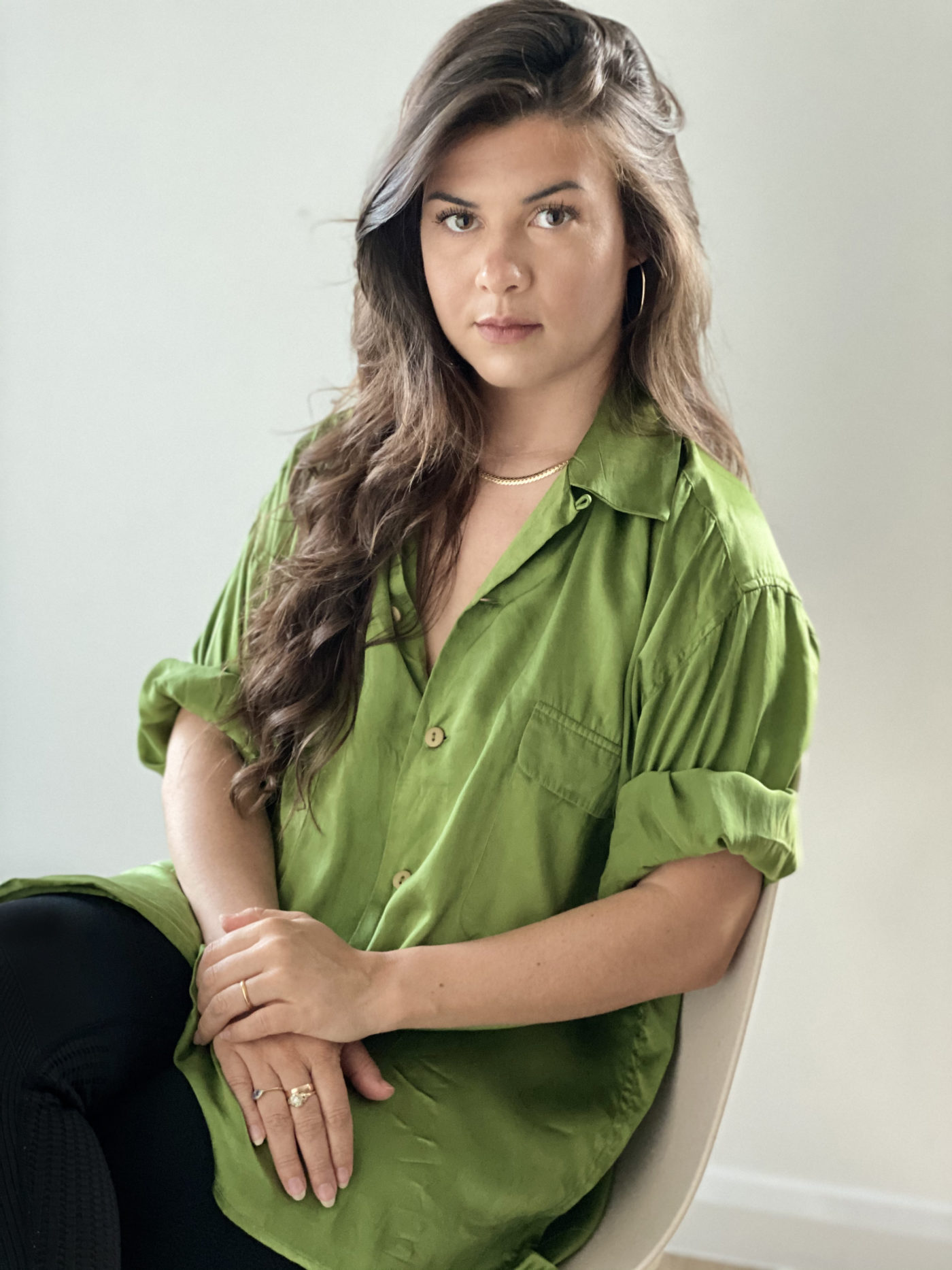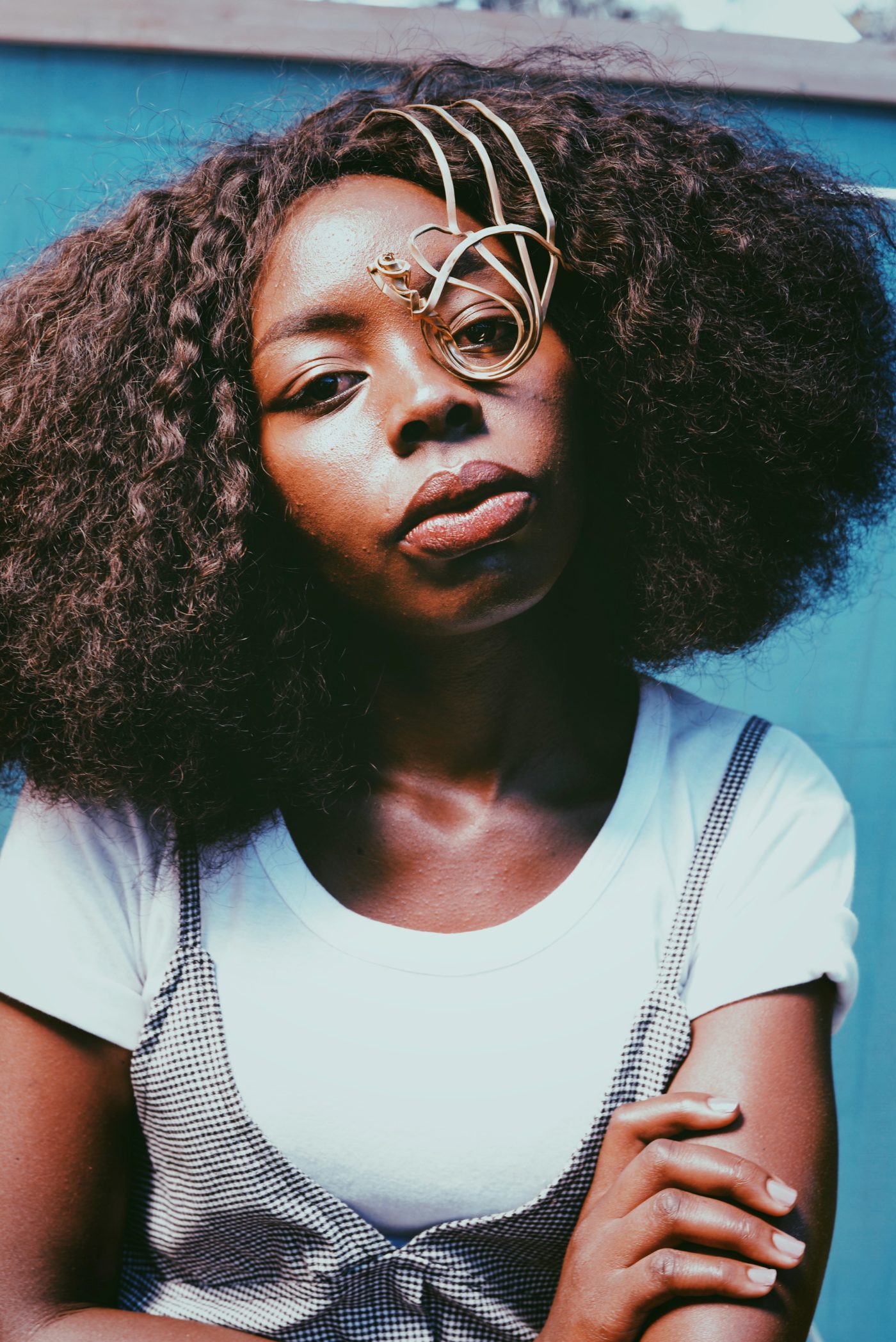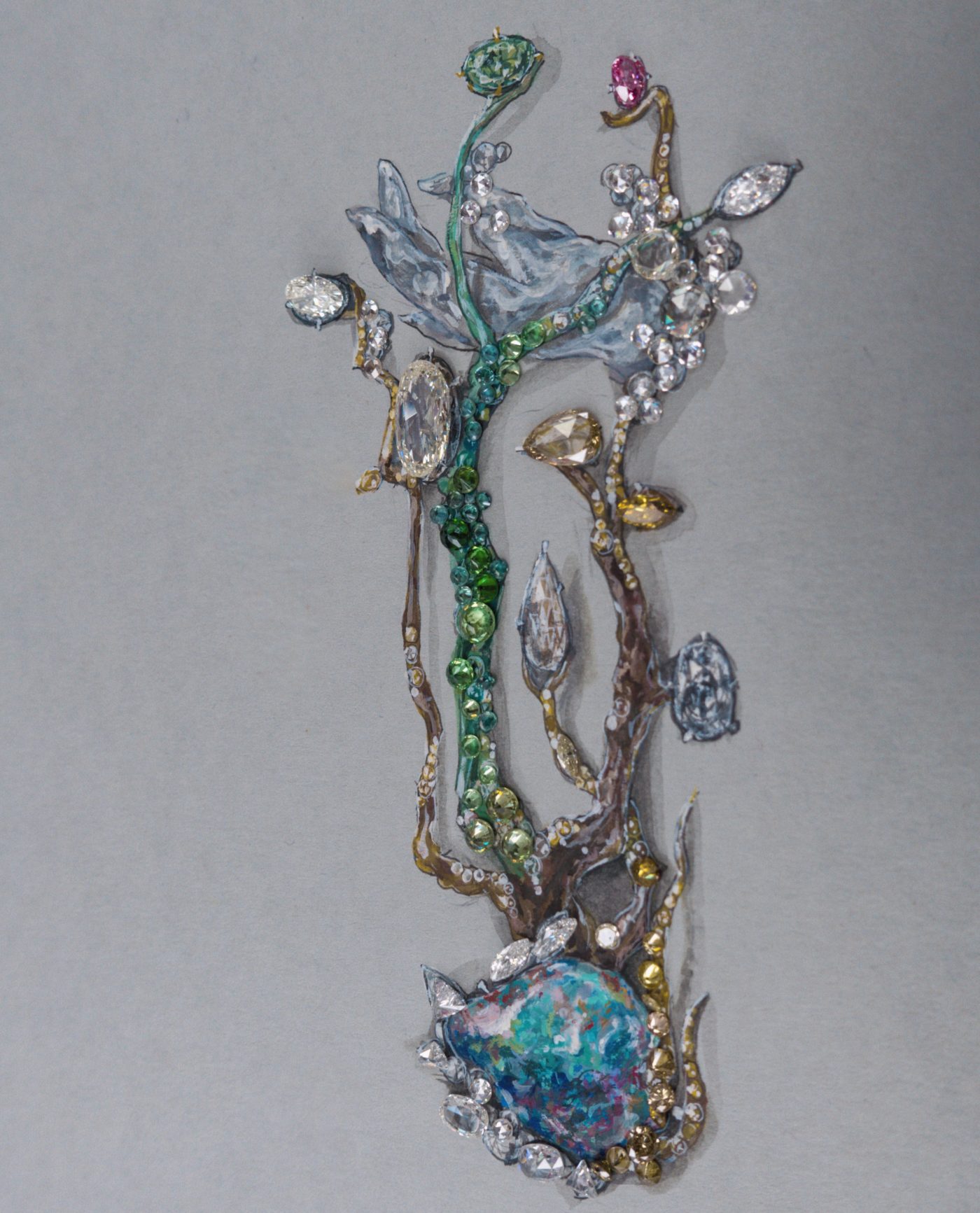Today we’re excited to launch a new recurring column: Jewel Box, a series on bejeweled spaces—locations that are jewelry-adjacent, visually rich, playful, and inviting. We aim to expand how we all think of adornment by widening our lens to celebrate adorned interiors of all kinds, from jewelry-industry spaces to shops, arts & cultural institutions and more that we think should be on your radar.
We’re delighted to kick off this new series with a behind-the-scenes tour of The Office of Collecting and Design, a gem of a museum in the Nevada desert. We sat down with the founder and curator of The Office of Collecting and Design, filmmaker Jessica Oreck, to talk about the museum, its unique (and extensive) contents, and the many remarkable stories that accompany it. Grab your magnifying glass and let’s dive in:

FUTURE HEIRLOOM: Tell us a bit about the Office of Collecting & Design: What led you to start the museum?
JESSICA ORECK: My parents say that I started collecting before I started talking. (Likely some snowball mythology there, but who am I to argue?) Though my early collections didn’t make it to adulthood, collecting remains very much at my core. Being a collector feels like one of my defining character traits. It isn’t just objects, but the way I live my life.The way I travel, the ideas I am drawn to, and most especially the way I work, are all built around patterns and series.
When I started making stop-motion animations professionally in 2011, that prompted an entirely new echelon of collecting. Many of the collections in the museum were seeded from props used in short films I made. Now it is a source of mutual motivation – sometimes the animations instigate a collection and sometimes the collections inspire an animation.
The museum is thoroughly multi-purpose. During the day it’s a museum (free and open to the public!) But it also functions as a prop library. When I have no appointments, I sneak into my studio at the back and animate.
At night, we host events in the museum: craft nights, readings, tiny concerts, dinner parties. And we also offer the space for rent as a backdrop for photoshoots as well as a BYOB cocktail hour.

FH: Can you give us some insight into the process of designing the space? How did you decide on the layout and displays in the space? What was most important to you about the design?
JO: It has been a very intuitive process. The entire undertaking has been a lesson in trusting my approach, my ability, and myself.
It’s hard to explain (even to myself) what is important in the design.

It feels to be simply a matter of knowing that something is in the right place or it isn’t. Sometimes, when something is out of place, I walk into the space and it feels out of balance – like the whole room is tilted in one direction or another. It sounds sort of mystical and highly impractical (from an outsider’s perspective), but that’s the best explanation I have.
The space and the displays are constantly evolving.
As new objects come into the museum, I often have to rearrange great swaths of the exhibit in order to accommodate even the tiniest of pieces.
Sometimes I am sad to break up the flow I’ve established to incorporate something new, but I find it tends to end up superior and more compelling in its new iteration.
The objects, to me, sometimes have their own voice, certainly their own personality, and if nothing else, at the very least an ineffable weight that dictates where they belong.
It feels ridiculous to say that out loud, but I have.





Bottom Row: A collection of Japanese pigments, sourced from an estate sale; this collection belonged to a painter, the wife of a pilot who had worked for Japan Airlines. Backstory via Office of Collecting and Design Instagram. Image Credits: Jessica Oreck.
FH: How have you accumulated the collections in the museum over the years?
JO: I have spent many delicious hours over the course of the last 3 decades hunting at flea markets, estate sales, beaches, trash dumps, swap meets, other people’s grandparents’ attics…. I adore the hunt.
(One of my rules for the museum is that I won’t buy anything online to add to the museum, I have to find it in person. Though we now accept donations too!)



Folks have called the museum a “time machine,” a “nostalgia machine,” and a
Jessica Oreck on visitor reactions to the Museum
“mix between the Hogwarts Castle and their grandparents’ home.”
FH: What feelings/experiences do you hope to evoke in the visitor?
JO: Folks have called the museum a “time machine,” a “nostalgia machine,” and a “mix between the Hogwarts Castle and their grandparents’ home.”
The type of people that enjoy the museum aren’t necessarily the type to be drawn to the more mainstream elements of Las Vegas. It’s sort of like a built-in filter to find “my people.” Either you get it or you don’t. But the people that get it really really love it. We’ve had some wonderful reactions. (We once had someone stay for 6 hours and a couple who came back three days in a row!)

Image Credit: Jessica Oreck.
I love the enthusiasm of the folks that get it, but I also love the really unexpected ones. For instance, we had a really macho guy here with his girlfriend. He was trying to be polite, but was maybe a bit bored, maybe a bit confused. And then he opened a drawer and pulled out an object.
He looked at me in total wonderment, with actual tears in his eyes, and said. “I haven’t thought about this since I was six years old. So many memories just came flooding back to me.” He just took it and sat down with it and was completely absorbed in those lost memories for a long while. It was so rewarding.
FH: What has been most exciting/fun about
opening the space for you?
JO: I couldn’t possibly pick just one thing. It has been such a source of joy and satisfaction to spend time around these objects. These pieces of trash/treasure that each hold what I call a “residue of attention.” All the things they’ve witnessed, the love and use they’ve been afforded, I get to run my fingers through that on a daily basis. It feels a little like magic sometimes.





Bottom Row, Left to Right: Flat stone cabachons that resemble landscapes; Stone spheres + marbles of various sizes. Image Credits: Jessica Oreck.
“These pieces of trash/treasure that each hold what I call a ‘residue of attention.’
Jessica Oreck on what most excites her about the Museum
All the things they’ve witnessed, the love and use they’ve been afforded, I get to run my fingers through that on a daily basis. It feels a little like magic sometimes.”
But I have also really loved getting to meet all the visitors. I love getting to see what sparks them, hear about their own lives and collections, and in some cases build long-term friendships.
I’ve loved being a part of the Instagram community. There’s so much enthusiasm and appreciation – not to mention knowledge. It’s incredible to be able to post something I know nothing about and within a couple of hours have responses detailing a history I couldn’t have imagined.





Bottom Row, Left to Right: More Milagros; A stunning Victorian hair choker necklace. Image Credits: Jessica Oreck.
And, of course, I love the donations. I mean, can you imagine anything better than receiving packages in the mail full of strange and wonderful treasure on a weekly basis? It’s like the best subscription service I never signed up for.


The accompanying card reads “Gold-Plated Wisdom from the Head of Your Father, 11/2013”. Image Credits: Jessica Oreck.



FH: Do you have any specific favorites in the collection?
JO: One of my favorite objects in the museum something we received as a donation very early on. It came in a box with a couple of other lovely objects, but it is just so darn mysterious. The box had very little information (we now require more info when folks donate.). But the note just said that the donor had had it for a long while and thought it would find a good home at the museum.
It is a tiny wooden box, about an inch square, relatively old, based on age and wear to the wood. The sides and top are wood-burned with little designs and the letters XNYD. The lid pivots to one side to reveal a little pocket lined with dried rose petals and what look to be pieces of eggshell.

And nestled in the middle is a tiny desiccated fish.
I. Have. So. Many. Questions.
But I love that someone made that. And then someone saved it for many years. And then someone sent it to the museum. I often joke that had anyone else received this strangeness in the mail they may have been concerned, considering who might be sending them a death threat. But to me, it is the perfect object to welcome into the collection. I can’t imagine it could have a better home.
FH: What would you say is the largest collection (or object)
in the museum?
JO: My longest running (and largest) collection is of “unplayable” dice. (Think Las Vegas standards: the pips might be slightly off, the corners chipped, handmade, poorly balanced, etc.)
FH: How and when did you start your dice collection?
JO: The earliest item in the museum was given to me when I was 12 years old. It is a tiny wooden box with two tiny tiny dice in it. The box and contents had belonged to my great grandmother and were given to me by my aunt. That was the initiation of my dice collection – which now numbers at least several hundred strong.



FH: Do you have a dream project, collection, or collaboration for the museum?
JO: Someday, I’d love to move the museum into a shipping container and make it mobile. I’d love to be able to bring it to different places and meet an even wider variety of people. I can’t begin to imagine how I could possibly secure thousands of tiny objects in a way that they would survive a road trip, (or what an inordinate amount of money that would require), but I can still dream!
Since the museum also functions as a prop library for my animation work, I am currently working on several new animated series – short documentary/educational content that is super fun, but I haven’t found the right venue. I’ve made several series for TED, but looking to branch out. My dream is to be part of an educational network – a group of folks making work that is well researched and well curated and somehow makes us money too while not slaving to an algorithm based on ad research. I’m sure there is someone out there who is looking for exactly the content I am making. I hope they’re reading this!





Bottom Row, Left to Right: A stately display of miniature frames; a flatlay of white objects in the museum’s collection. Image Credits: Jessica Oreck.
FH: Any exciting upcoming projects or collaborations for the museum that you’d like to share?
JO: We are always looking for commissions and collaborations, so please reach out at officeofcollecting [at] gmail [dot] com
or on Instagram/TikTok @office.of.collecting.
FH: Finally, how can readers best support your work and the museum?
JO: Of course, we love donations – both monetary and object based. But we do also sell merchandise and seasonal products.
The best way to stay up to date on those opportunities is to follow us on Instagram or TikTok (@office.of.collecting).
Helping to spread the word about our little museum is always hugely appreciated!
You can learn more about The Office of Collecting and Design on their website, here more from Jessica about the museum on the Atlas Obscura podcast, and follow the museum on Instagram @office.of.collecting.
Our sincere thanks to Jessica Oreck and the Office of Collecting and Design for this feature. Interview responses and images courtesy of Jessica Oreck. Headshot Photography by Homer Liwag; all other Image Credits by Jessica Oreck or Johnny Espitia, as noted. Interview conducted and feature edited, compiled, and formatted by Future Heirloom Editor Jackie Andrews.



























